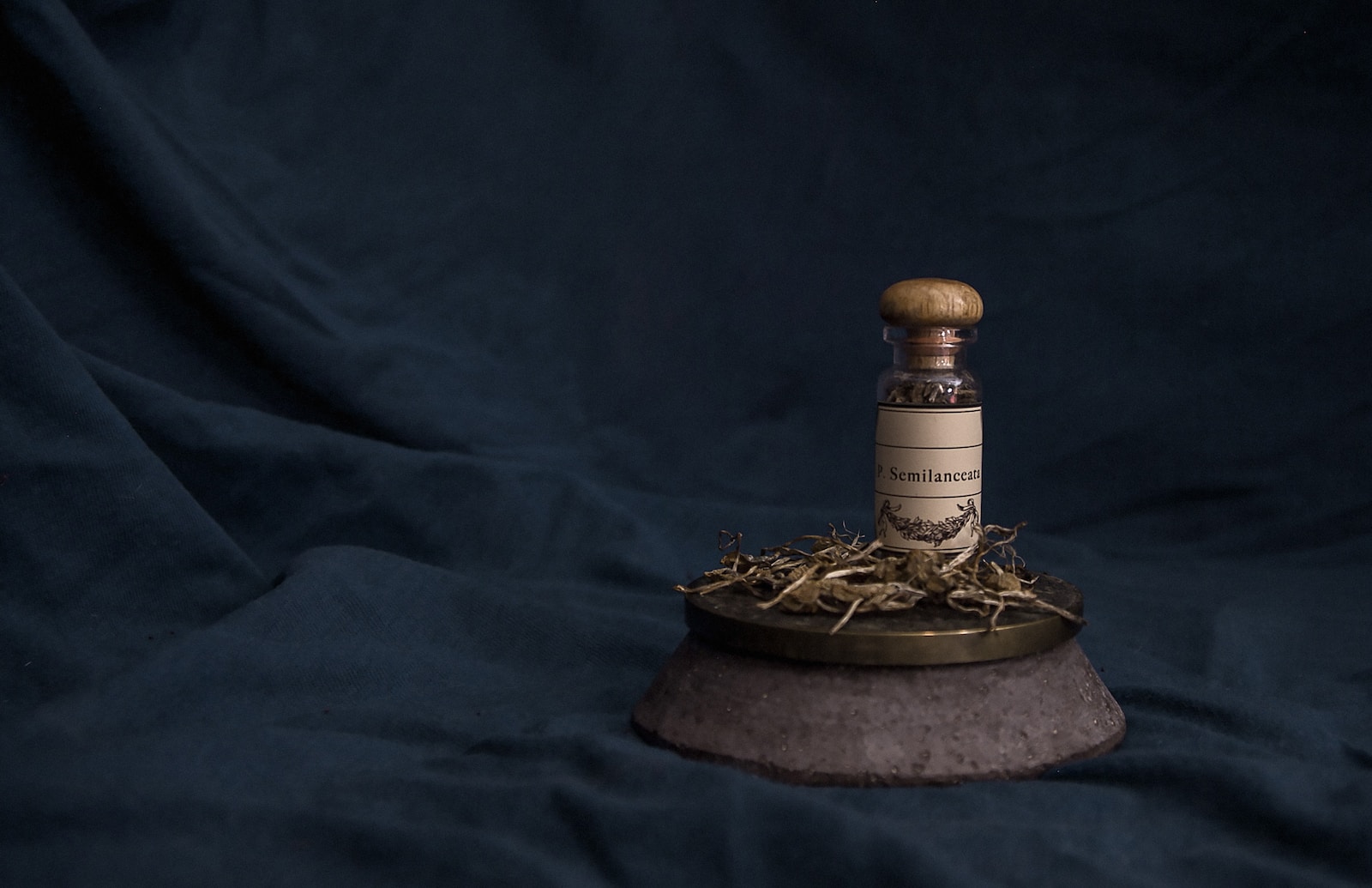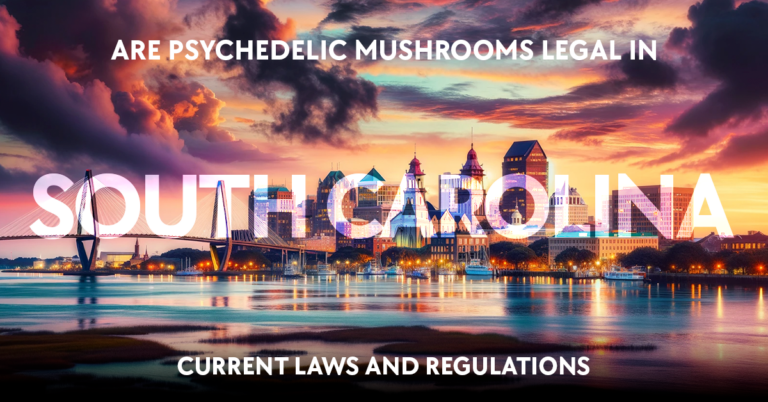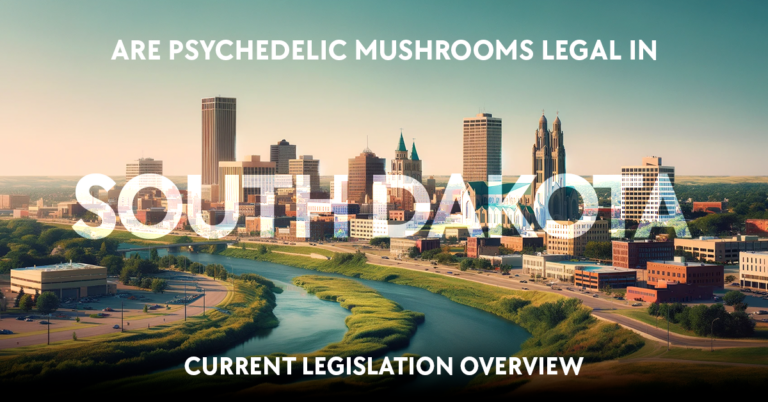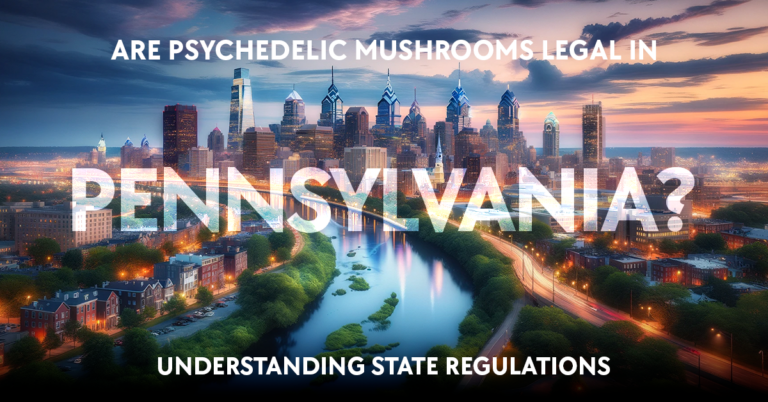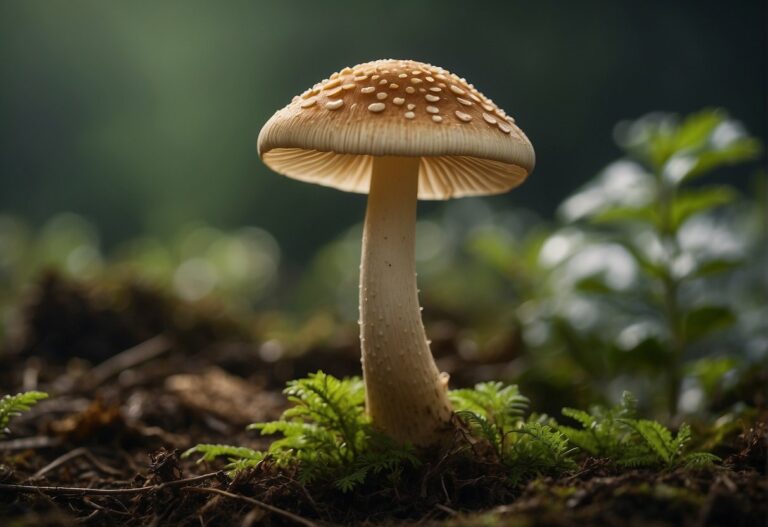Psilocybin is a naturally occurring psychedelic compound found in a variety of mushroom species, primarily those belonging to the genus Psilocybe. This psychoactive substance has a long and fascinating history, dating back thousands of years, and has been used by various cultures for religious, spiritual, and recreational purposes. Throughout the years, scientific and legal perspectives on psilocybin have also shifted, leading to its current resurgence in the realm of research and therapy.
The origins of psilocybin use can be traced back to ancient Mesoamerican cultures, particularly in Mexico’s Sierra Mazateca region, where the local people incorporated these “magic mushrooms” into their religious ceremonies and healing practices. In the mid-20th century, researchers and ethnobotanists began to take an interest in psilocybin, leading to its isolation, chemical synthesis, and subsequent classification as a Schedule I substance in the United States.
Today, research on the potential therapeutic applications of psilocybin is gaining momentum, with promising results emerging from clinical trials for the treatment of conditions such as depression, anxiety, and addiction. This renewed interest in the compound signifies a pivotal moment in the history of psilocybin, as its potential benefits are being reevaluated and a broader understanding of its effects and applications is being cultivated.
Origin of Psilocybin
Table of Contents
Psilocybin is a naturally occurring compound found in various species of mushrooms, commonly referred to as “magic mushrooms.” These mushrooms have been utilized by numerous cultures throughout history for their psychoactive effects during ceremonies, rituals, and as entheogens. One well-known genus that contains psilocybin is Psilocybe, with different species found across the world.
In Mexico, pre-Columbian civilizations such as the Aztecs and the Mayans used psilocybin-containing mushrooms in religious and divination practices. The Aztec term for magic mushrooms, “teonanácatl,” translates to “flesh of the gods” in the Nahuatl language. Meanwhile, the Maya, another indigenous civilization in Mexico and Central America, also incorporated the magic mushrooms into their religious ceremonies and practices.
Apart from Mexico, evidence of psilocybin-containing mushroom usage has been found among indigenous groups in Siberia who used the Amanita muscaria mushroom in their rituals. Reindeer herders in the region participated in ceremonies where they consumed these mushrooms to connect with the spirit world.
The use of psychoactive plants and fungi dates back even further to ancient Greek culture. The Eleusinian Mysteries, a set of secret rituals practiced in ancient Greece, are thought to have incorporated the use of an entheogenic substance known as “kykeon.” While the exact substance used remains a mystery, some researchers have proposed that it may have contained psilocybin or another psychoactive compound.
In Mexico, the indigenous Toltec people revered the serpent god, Quetzalcoatl, who was believed to have granted humans knowledge of the sacred mushrooms. The Aztec people, who later conquered the Toltec civilization, continued the tradition of using psilocybin-containing mushrooms in their rituals.
During the Spanish conquest, Catholic missionaries sought to suppress the consumption of entheogenic substances, including psilocybin mushrooms. Despite the efforts of European colonizers, the practice persisted among native populations across the Americas, albeit in secret.
In the 20th century, interest in psilocybin mushrooms was revitalized as researchers studied the potential psychotherapeutic benefits of the compound. Additionally, the contemporary spread of information allowed for a resurgence of magic mushroom use, both medicinally and recreationally, across the globe.
As a result, psilocybin-containing mushroom species, like those from the Psilocybe genus, have now been integrated into various aspects of cultures worldwide. From their ancient origins in Mexico and possibly in Greece, to the present day, these “magic mushrooms” have played significant roles in human history and culture.
Cultural Significance
Psilocybin, a naturally occurring psychedelic compound found in some mushrooms, has a long and rich history of cultural and religious significance. In ancient Mesoamerican cultures, such as the Aztec and Maya civilizations, psilocybin mushrooms were used in rituals and religious ceremonies for their mind-altering effects. These mushrooms, often referred to as teonanácatl (flesh of the gods) by the Aztecs, were believed to connect them with the divine and facilitate mystical experiences.
Healing and divination practices were also prominent in these ancient cultures. Shamans would use psilocybin mushrooms for their potential therapeutic and visionary properties, seeking insights and spiritual guidance. Many indigenous communities believed that these mushrooms could reveal hidden knowledge, and thus, they became important tools for religious and spiritual exploration.
In the mid-20th century, interest in the cultural significance of psilocybin reemerged with the work of ethnobotanist R. Gordon Wasson. While studying indigenous communities in Mexico, Wasson learned of the Mazatec healer María Sabina and her use of psilocybin mushrooms in traditional healing ceremonies. Sabina’s encounters with the spirit world through mushroom consumption attracted interest from academics, researchers, and psychonauts alike.
Nevertheless, not all aspects of the psilocybin history were peaceful. The use of these mushrooms as sacraments in indigenous cultures often came into conflict with the Catholic Church during the Spanish colonization of the Americas. Attempts were made to suppress the use of these sacred mushrooms, but despite these efforts, many native communities continued to incorporate them into their spiritual and healing practices.
Today, the history of psilocybin and its cultural significance is being rediscovered with a renewed interest in psychedelic-assisted psychotherapy and research on its potential benefits. The integration of ancient practices and modern scientific perspectives offers a promising outlook for the future of psilocybin use in both traditional and therapeutic settings.
In summary, the cultural significance of psilocybin is deeply rooted in the traditions of various indigenous communities, where it has been used for centuries for religious, spiritual, and healing purposes. Despite historical conflicts and cultural changes, the enduring importance of this powerful compound continues to resonate in contemporary society as its potential benefits in mental health and holistic wellbeing are further explored.
Biological Aspects
Psilocybin is a naturally occurring psychedelic compound found in various species of mushrooms, commonly known as “magic mushrooms” or “psilocybin mushrooms” 1. These fungi belong to the genus Psilocybe, and their psychoactive properties are primarily attributed to the presence of psilocybin and its active metabolite, psilocin 2.
The biosynthesis of psilocybin within these fungi involves a series of enzymatic reactions, which ultimately transform the amino acid tryptophan into psilocybin 3. This process is believed to have evolved independently in multiple lineages of fungi, highlighting the complex interactions between fungi and their environments 4.
There are over 200 known species of psilocybin-containing mushrooms found across the globe, with varying degrees of potency and distribution patterns 5. These fungi typically thrive in areas with high humidity and can often be found growing on decaying plant material or in areas with nutrient-rich soil 6. The species within the genus Psilocybe also display a wide range of morphological traits, making their identification a challenging task even for experienced mycologists 7.
Interest in the study and therapeutic use of psilocybin has grown in recent years due to its potential in addressing various mental health disorders, such as depression, anxiety, and addiction 8. The psychedelic effects of psilocybin have been shown to be dependent on the activation of specific serotonin receptors in the brain. This complex interaction between psilocybin, psilocin, and the serotonergic system is believed to be responsible for the alterations in perception, emotions, and cognitive processes experienced by individuals consuming these mushrooms 9.
In conclusion, the biological aspects of psilocybin-containing fungi demonstrate the remarkable diversity and complexity of these organisms. Research into the biosynthesis, distribution, and pharmacology of psilocybin and psilocin will continue to provide valuable insights into the functioning of these fascinating fungi, as well as their potential therapeutic applications.
Psychoactive Properties
Psilocybin, a naturally occurring psychedelic compound found in certain mushrooms, has been used throughout history for its psychoactive properties. When ingested, psilocybin is converted to psilocin, which is responsible for the hallucinogenic effects experienced by users. Similar to LSD, psilocybin is considered a hallucinogen and classified as a psychotropic substance. Its effects on perception, thought processes, and emotions can vary greatly from one individual to another.
The psychoactive effects of psilocybin can include changes in visual perception, auditory and tactile sensations, emotional shifts, and altered sense of time and space. Euphoria and a sense of spiritual or mystical connection are also commonly reported outcomes. However, negative effects such as anxiety, paranoia, and confusion can also arise during a psilocybin experience, especially in users with a predisposition for mental health issues.
Psilocybin’s mechanism of action is primarily centered around the activation of serotonin 2A (5-HT2A) receptors in the brain. It has been observed that the intensity of the psychedelic experience is directly correlated with the extent of 5-HT2A receptor activation. This biological target is shared by other classic psychedelic substances, such as LSD and mescaline.
The history of psilocybin use can be traced back to ancient cultures, particularly in Mesoamerica, where indigenous peoples consumed mushrooms containing the psychoactive compound in religious and spiritual ceremonies. These mushrooms, particularly those from the Psilocybe genus, have been revered and utilized by various cultures in regions such as Central and South America for their mind-altering properties.
In recent years, scientific research into the psychoactive properties of psilocybin has experienced a resurgence, as it has shown promise in addressing various mental health issues, such as depression and anxiety disorders. These studies have contributed to the ongoing reevaluation of psilocybin’s potential therapeutic applications, as well as increased understanding of its neurobiological mechanisms and effects on human consciousness.
Scientific Research
Psilocybin, a psychoactive compound found in hallucinogenic mushrooms, has garnered significant attention from the scientific community in recent years. Researchers have focused their efforts on understanding its potential therapeutic applications, primarily treating mental health disorders such as depression and anxiety.
In the 1950s and 1960s, LSD (lysergic acid diethylamide) and other hallucinogens were widely studied by scientists for their potential therapeutic benefits. However, unfavorable public perception and subsequent legislation led to a stagnation of research in this area. Recently, there has been a resurgence of interest in tryptamine psychedelics, like psilocybin, as a potential treatment for various mental health conditions.
Extensive clinical studies have been conducted to examine the efficacy of psilocybin-assisted psychotherapy. Some of these studies have shown promising results in treating depression, anxiety, PTSD, and substance use disorders. Psilocybin appears to have a unique receptor binding profile, different from traditional psychiatric medications. This difference may explain its distinct therapeutic effects, contributing to an emerging new paradigm in mental health treatment.
Several research institutions have taken a keen interest in studying psilocybin and its possible applications. Renowned scientists have been at the forefront of this research, exploring its effects on the brain’s neural networks and potential for long-lasting therapeutic outcomes. The scientific community widely acknowledges the importance of conducting rigorous, controlled studies to better understand the potential benefits and risks of using psilocybin as a medicine.
In conclusion, the scientific research on psilocybin has come a long way since its early beginnings. With a deeper understanding of its receptor binding profiles and the emerging new paradigm in mental health treatment, psilocybin holds promising potential as a therapeutic tool.
Medical Applications
Psilocybin, a naturally occurring compound found in certain mushrooms, has been used for centuries for its psychoactive effects. In recent years, there has been a resurgence of interest in the potential medical applications of psilocybin, particularly for mental health disorders.
One area of focus has been the use of psilocybin in the treatment of depression. Multiple studies have shown promising results, with participants experiencing significant improvements in depressive symptoms after undergoing psilocybin-assisted psychotherapy. This has led to further research investigating the therapeutic potential of psilocybin for individuals suffering from major depressive disorders, as well as treatment-resistant depression.
Another promising application of psilocybin therapy is in the management of anxiety, particularly in patients with life-threatening illnesses such as cancer. Researchers have found that a single dose of psilocybin, combined with psychotherapy, can lead to substantial and lasting reductions in anxiety and depression symptoms in these individuals. The potential for psilocybin to provide relief and healing in the face of significant adversity has attracted significant attention within the medical community.
In addition to depression and anxiety, the potential of psilocybin in the treatment of various addictions has been explored. Preliminary studies have suggested that psilocybin therapy may be effective in reducing cravings and promoting abstinence in individuals struggling with substance use disorders, including alcohol, tobacco, and cocaine addiction. While further research is needed, these initial findings support the potential role of psilocybin in addiction treatment.
The therapeutic potential of psilocybin extends beyond mental health disorders; it has also been investigated for its potential to alleviate pain. Some research has shown that psilocybin may have analgesic effects, providing pain relief for certain chronic pain conditions. Although more studies are needed, these findings offer hope for the development of novel, non-opioid pain management strategies using psilocybin.
In conclusion, the medical applications of psilocybin are vast and varied, with promising results shown in the treatment of depression, anxiety, addiction, and potentially pain management. The resurgence of interest in psilocybin research ensures that this field will continue to grow, and may revolutionize the way we approach mental health and pain treatment in the future. However, it is crucial to conduct further research to fully understand and harness the therapeutic potential of this fascinating compound.
Legal and Social Issues
Psilocybin, a naturally occurring psychedelic compound found in some species of mushrooms, has a complex history filled with legal and social issues. Its use dates back centuries, with indigenous cultures taking part in ritualistic practices involving psilocybin. These rituals often aimed at fostering a connection with the spiritual realm or facilitating interpersonal connections among community members.
With the rise of recreational drug use in Western societies in the 1960s, psilocybin emerged as a popular substance for self-exploration and creativity enhancement. At the forefront of this movement were countercultural figures like Timothy Leary and Richard Alpert (later Ram Dass), who believed that psychedelics such as psilocybin could produce an expansive understanding of the world and offer solutions to social conflicts. However, their advocacy received both support and backlash, which contributed to the legal and social debates surrounding the use of psilocybin.
As psilocybin gained prominence in the public sphere, it started to face legal scrutiny. By the late 1960s and early 1970s, countries like the United States had classified psilocybin as a controlled substance, with governments around the world implementing similarly strict regulations. Despite these restrictions, an underground community of psilocybin users continued to thrive, gathering informally to share their experiences and keep the practice alive.
Over time, the perception of psilocybin and its potential benefits has gradually shifted, leading to renewed interest from the scientific community. Researchers began to explore the potential therapeutic applications of psilocybin for conditions such as mental health disorders and addiction. As a result, public opinion on the use of psilocybin has become more nuanced, with ongoing debates on its benefits versus its potential risks.
In conclusion, the history of psilocybin is marked by legal and social issues that continue to spark debate today. From its roots in ancient rituals to its emergence as a recreational and potentially therapeutic substance, psilocybin has navigated a complex landscape, reflecting changing societal values and attitudes toward the role of psychedelic substances.
Prominent Figures in Psilocybin History
One of the key figures in the history of psilocybin is Gordon Wasson, an American author, ethnomycologist, and banker who introduced the substance to the western world. In the 1950s, Wasson traveled to Mexico where he participated in a traditional Mazatec mushroom ceremony led by a local healer named Maria Sabina. This experience led him to write an article for Life Magazine, which brought attention to the psychoactive effects of psilocybin mushrooms.
Albert Hofmann, a Swiss chemist renowned for his discovery of LSD, played a pivotal role in the history of psilocybin as well. After learning about Wasson’s experiences in Mexico, Hofmann isolated and identified psilocybin and its molecular structure in 1958. This facilitated scientific research on the compound and its potential therapeutic applications.
Another prominent figure in the psilocybin movement is Timothy Leary, a psychologist and Harvard University professor, known for his controversial research on psychedelics in the 1960s. Along with his colleagues, Leary conducted the Harvard Psilocybin Project, which explored the potential psychological and therapeutic effects of the substance. However, Leary’s work faced backlash and criticism due to the perceived promotion of drug use and the counter-culture movement of the era.
The renowned ethnobotanist, lecturer, and author Terence McKenna was an influential advocate for the use of psilocybin mushrooms and other psychedelics, throughout the 1980s and 1990s. McKenna theorized that psilocybin played a crucial role in the evolution of human consciousness. He also postulated potential therapeutic benefits and significant contributions to personal development through the use of this powerful compound.
Finally, organizations like the American Chemical Society (ACS) have contributed significantly to the scientific understanding and knowledge of psilocybin’s potential applications. Today, the substance is being researched for its potential to treat a variety of mental health conditions, such as depression, anxiety, and PTSD.
In conclusion, each of these figures and organizations has played a significant role in shaping the history and understanding of psilocybin. Their contributions have led to an increasing interest in the therapeutic potential of this remarkable compound.
Frequently Asked Questions
When was psilocybin discovered?
Psilocybin was first isolated and identified in 1958 by Swiss chemist Albert Hofmann, who also discovered LSD. Hofmann was studying the psychoactive properties of the Psilocybe mexicana mushroom and identified psilocybin as the primary active compound responsible for its hallucinogenic effects.
What are the historical uses of psilocybin?
Historically, psilocybin-containing mushrooms have been used in religious and spiritual rituals by Indigenous cultures in Central and South America. The Mazatec people of Mexico are known to have used Psilocybe mushrooms for healing and divination purposes. In Europe, archaeological evidence suggests the potential use of psilocybin-containing mushrooms in prehistoric cultures, but it is challenging to confirm their age and purpose conclusively.
How does psilocybin affect the brain?
Psilocybin primarily affects the brain by binding to serotonin receptors, specifically the 5-HT2A receptor. This binding modulates the release of neurotransmitters and causes changes in perception, cognition, and emotion. While the exact neural mechanisms underlying its effects are not fully understood, research indicates that psilocybin can alter patterns of brain connectivity and potentially stimulate neurogenesis.
What are the potential benefits of psilocybin?
Recent research has explored the potential therapeutic benefits of psilocybin for various mental health disorders, including depression, anxiety, and PTSD. Studies have shown that psilocybin can lead to lasting improvements in mood, well-being, and life satisfaction. Additionally, there is evidence that psilocybin can help reduce the symptoms of obsessive-compulsive disorder, alcohol dependence, and nicotine addiction.
Who are the key figures in psilocybin research?
Aside from Albert Hofmann, who first isolated and identified psilocybin, other notable researchers include Timothy Leary and Richard Alpert (also known as Ram Dass), who conducted early studies on the mental health benefits of psilocybin at Harvard University in the 1960s. More recently, researchers such as Roland Griffiths at Johns Hopkins University and Robin Carhart-Harris at Imperial College London have contributed significantly to the field, with groundbreaking studies on psilocybin’s therapeutic potential.
How has the legal status of psilocybin evolved over time?
The legal status of psilocybin has varied across time and locations, with its use being closely tied to cultural, social, and political contexts. In the United States, psilocybin was banned in the late 1960s due to concerns over widespread recreational use and potential dangers. It was placed in the Schedule I category under the Controlled Substances Act in 1970. However, in recent years, there has been a resurgent interest in exploring its potential therapeutic uses, leading to legal changes in some cities and states, such as decriminalization in Oregon and various cities like Denver and Oakland.
Footnotes
- https://www.sciencedirect.com/science/article/pii/S1878614622000095 ↩
- https://www.sciencedirect.com/science/article/pii/S0149763419309649 ↩
- https://www.nature.com/articles/s41398-021-01335-5 ↩
- https://www.sciencedirect.com/science/article/pii/S0306987719308229 ↩
- https://red.library.usd.edu/honors-thesis/52/ ↩
- https://www.sciencedirect.com/science/article/pii/S1878614622000095 ↩
- https://www.sciencedirect.com/science/article/pii/S0149763419309649 ↩
- https://red.library.usd.edu/honors-thesis/52/ ↩
- https://www.sciencedirect.com/science/article/pii/S0149763419309649 ↩

